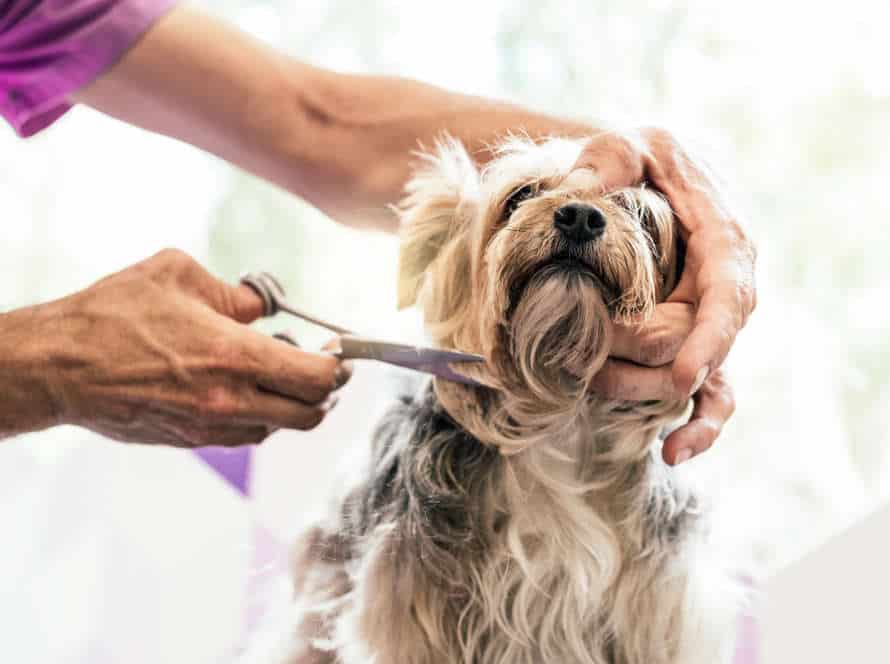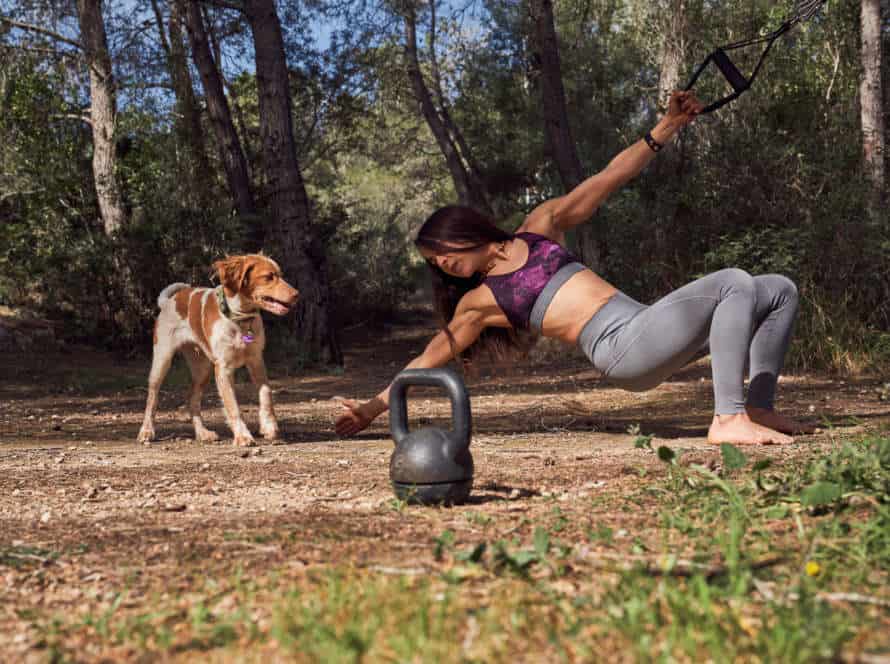Feeding Your Dog: Understanding Nutritional Requirements
It’s essential to feed your pup a balanced, nutritious diet. Here’s what you need to know:
- Protein: This nutrient helps build and repair organs, muscles and bones. 18% of their diet should be high in protein.
- Carbs: Fruits, veg and grains give energy, fiber and vitamins.
- Fats: Fats provide energy and help keep coats and skin healthy. 5-10% of their diet should be fats.
- Vitamins/Minerals: Needed for bone development, blood clotting, and immune system health.
- Freshwater: Give your pooch clean, fresh water at all times.
By understanding nutritional requirements, you can make the best decisions for your dog’s diet. That way, they can live their happiest and healthiest life!
Types of Nutrients Your Dog Needs
Feed your pup a healthy diet! It’s essential for their body to get all the vitamins and minerals it needs. Different nutrients give different advantages to your pooch! We’ll talk about the various kinds of nutrients your dog needs to stay fit and vigorous.
Proteins
Proteins are essential for a pup’s health. They help build muscles, repair tissues, and regulate metabolism.
Animal-based proteins, like beef, chicken, fish, and eggs, are the best sources of protein. They contain all the necessary amino acids.
Plant-based proteins, such as lentils, peas, and chickpeas, can be helpful in a vegetarian or vegan diet.
Hydrolyzed proteins are broken down into smaller parts which makes them easier to digest. They’re usually found in prescription dog foods.
It’s essential to give your dog a balanced diet with high-quality protein sources.
Pro tip: Check with your veterinarian about your pup’s nutritional needs and the best food for them.
Fats
Fats are vital for your pup’s energy, growth and wellbeing. Plus, they make their food tastier and more appetizing.
There are three main types of fats:
- Saturated Fats. These mostly come from animal sources. Too much of them can lead to weight gain and other health complications. So, watch the amount.
- Monounsaturated Fats. Found in olive oil, canola oil, and nuts. They are easily digestible and a great source of energy.
- Polyunsaturated Fats. Like omega-3 and omega-6, these your dog’s body can’t make. They’re found in fatty fish and plant-based sources. Important for their immune system, skin and coat health.
But before adding fats to your pup’s diet, consult your vet on the right type and amount to give.
Carbohydrates
Carbs are a must for dogs! They need to be part of their diet for optimal health.
There are two types of carbs that are beneficial for dogs. Simple carbs, which come from fruits, veggies, and honey, provide quick energy. Complex carbs, like whole grains, legumes, and sweet potatoes, provide steady energy.
It’s important to find the right balance of carbs in your pup’s diet. Too much can lead to obesity and diabetes. Consult your vet for guidance on the ideal intake for your pup.
Vitamins
Vitamins are must-haves for your pup’s diet. There are two kinds: fat-soluble and water-soluble. Fat-soluble ones (A, D, E, and K) stay in the fat cells and liver. They help with vision, bones, muscles, and blood clotting. Water-soluble vitamins (B and C) need to be consumed. They support metabolism, energy, immunity, and brain health.
Pro Tip: Feed your dog a balanced and varied diet. Ask your vet to make sure it meets their needs. Check for any possible deficiencies.
Minerals
Minerals are vital for your pup’s wellbeing. There are two types: macro minerals & trace minerals.
Macro Minerals:
- Calcium is needed for strong bones & teeth. It also helps muscles & blood clotting.
- Phosphorus supports bone health & energy metabolism.
Trace Minerals:
- Iron helps with red blood cell formation & energy metabolism.
- Zinc is key for a healthy immune system & wound healing.
- Copper is important for connective tissues & energy metabolism.
Feeding your dog balanced, complete meals made with whole foods can provide all minerals they need. Pro tip: Check with your vet before adding any supplements to your dog’s diet.
How to Read Labels and Identify Nutritional Value
Understand how to read a dog food label!
Know the nutritional value of the food you’re giving your pup. This info can help you make sure your dog stays healthy.
Let’s cover the basics of label reading! Identify the nutritional value of different dog foods.
Understanding the Guaranteed Analysis
The Guaranteed Analysis on pet food labels is key for knowing the nutritional content. It has four parts:
- Crude Protein for muscle growth and repair.
- Crude Fat for vitamin absorption and skin/coat health.
- Crude Fiber to regulate digestion.
- Moisture for hydration and overall health.
Balance these components for your dog’s individual needs. Pro Tip: Ask your vet for a personalized feeding plan.
Evaluating the Ingredient List
It’s essential to check the component list on dog food labels to identify its nutritional value. Here are some tips to read them effectively:
- First, figure out the protein source – it should be a specific one, such as chicken or beef. Avoid labels with unclear terms like “meat” or “animal by-products”.
- Check the first five ingredients – they’re the primary components of the food. Look for high-quality protein sources and whole-food carbs. Avoid labels with fillers like corn or wheat.
- See if added vitamins and minerals are included – dogs should have essential nutrients like calcium, potassium, and Vitamin A.
- Avoid artificial preservatives, colors, and flavors – these can be harmful for your dog’s health.
By scrutinizing the ingredient list, you can make sure your pup is getting a balanced diet that meets their individual needs.
Identified Nutrient Sources
Reading dog food labels and figuring out the nutrient sources is key for giving your furry bestie the nutrition they need. Here are the nutrient sources to watch for:
- Protein – from poultry, meat, eggs, fish.
- Carbs – from rice, sweet potato, barley.
- Fats – from chicken fat, fish oil, veg oil.
- Vits & Minerals – calcium, iron, vits A, C, D.
- Fiber – from whole grains & veg – vital for digestion & bowel health.
Pro Tip: Check with a vet before changing diet or feeding new foods!
Feeding Options for Your Dog
Filling Fido’s bowl? Let’s make sure he’s eating right! There are various ways to guarantee your pup gets the nourishment they need. Consider these options when selecting the perfect food.
Commercial Dog Food
Commercial dog food is an easy and budget-friendly way to take care of your pup’s nutrition. It’s advertised as a complete and balanced diet, designed to meet the dietary needs of doggies, depending on their age and health.
There are several types of commercial food:
- Dry food – most popular variety, comes in many shapes, sizes, and tastes.
- Wet food – great for those with dental issues and low water consumptions.
- Semi-moist food – handy, tasty, and often sold in single servings.
- Prescription food – used to handle various health issues like obesity, dental problems, and allergies.
It is necessary to pick the right food for your pet, taking into consideration factors such as breed, age, activity level and health status. You should speak with a vet to figure out the ideal feeding option for your dog.
Dry Kibble
Dry kibble is a great way to provide your pup with all their necessary nutrition. It’s simple and convenient! Here are some of the advantages of feeding your dog dry kibble:
- Complete and Balanced Nutrition: It has all the vital nutrients for growth, maintenance, and wellness.
- Cost-Effective: It’s less expensive than other food options and comes in different brands and flavors.
- Long-Lasting: It has a long shelf life, so you can store it in a cool, dry spot till it’s time to feed your pup.
- Dental Health: The abrasive texture helps keep teeth and gums healthy.
Pro tip: Check the ingredients list before buying to make sure it meets your pup’s needs. Plus, provide fresh water while feeding.
Canned Food
Canned food is great for your pup! It can give them lots of advantages compared to kibble and homemade meals.
It is full of moisture which helps keep your doggo hydrated and can help their digestion. It is high in protein and low in carbs, ideal for pooches who need to slim down or manage diabetes. Plus, the vitamins and minerals in it are great for their overall health.
When selecting canned food, choose ones without artificial preservatives, colors or flavors, and make sure it has high protein content. Be sure to check the label for the right serving size and talk to the vet about what’s best for your pup.
Homemade Diet
Feeding your pup a homemade diet can be a great choice! You can have better control over what they eat, while making sure they get wholesome, nutritious ingredients.
Understand their nutritional needs – the necessary vitamins, minerals, proteins, fats and carbs. Get advice from a vet to make sure their diet is balanced and suitable for their health.
Start incorporating simple, nutritious ingredients into their diet – lean proteins, veggies and whole grains.
Be sure the ingredients are fresh, cooked through, and free of anything toxic to dogs, like onions, chocolate and grapes.
Remember: Homemade diets can be healthy and cost-effective, but you need to make sure they get a balanced, nutritious diet.
Creating a Balanced Homemade Diet
For your pooch’s health, creating a well-rounded homemade diet is a must. Here are some tips:
- Ask your vet to determine the nutrition needs of your pup, based on breed, age and activity level.
- Include protein sources, such as lean meats, fish and eggs.
- Give healthy fats from fish oil, coconut oil or flaxseed oil.
- Include a variety of fruits and veg for vitamins, minerals and fibre. Beware of toxic foods like grapes, onions and raisins.
- Use grains like brown rice and quinoa in moderation, as they could cause digestion issues in some dogs.
Keep an eye on your pup’s weight and health to make sure their homemade diet fits their nutritional needs. If unsure, talk to your vet.
Raw Food Diets
Raw food diets for dogs are made of uncooked meat, bones, fruits, and veggies. Many owners choose this diet since it may enhance their pup’s coat, digestion, and health. But, there are downsides to consider.
Advantages:
- Easier digestion – raw food has less starch.
- Shinier coat – fatty content will make their fur shine.
- Stronger immune system – enzymes can aid immunity.
Risks include bacterial infections and nutrient deficiencies.
Pro tip: Before you switch, talk to a vet to make sure the diet is complete and balanced.
Special Considerations for Your Dog’s Nutritional Needs
To give your pet the best diet, you must understand their nutritional needs. Here are some of the things to consider when thinking about what to feed your pup:
- Think about their age, size, activity level, and preexisting health conditions.
- Also, consider the type and quality of food, as well as portion size.
- Last but not least, don’t forget about treats!
Age-Appropriate Diets
It’s key to give your dog food that fits their age for their overall health. Each stage of life calls for a different mix of nutrients to help with their growth, development and wellness.
Puppies: They need higher levels of protein, fat and calories to back their growth and development. Get “puppy food” or “for all life stages” products that meet the Association of American Feed Control Officials (AAFCO) standards for growth.
Adult dogs: They need a balanced diet with necessary nutrients in the correct amounts. Get “complete and balanced” products that meet the AAFCO standards for maintenance.
Senior dogs: Lower calories are needed to keep a healthy weight and more joint-supporting nutrients such as glucosamine and chondroitin. Get “Senior” or “Mature” products that meet the AAFCO standards for maintenance or consult a vet for advice.
Knowing your dog’s age-appropriate nutritional needs and getting food that fits those needs helps guarantee your furry friend stays healthy and happy throughout their life.
Active, Working Dogs
Active and working dogs need extra attention for their nutrition. Protein, fat, and complex carbs give them the energy they need. It’s important to keep them hydrated, especially in hot weather. Consider feeding a high-quality food made for active dogs. Talk to your vet to decide how much and how often to feed your pup. Take their breed, size, and activity into account.
Health Conditions and Dietary Changes
Nutrition for dogs can differ based on age, weight and overall health status. Making dietary adjustments with these factors in mind is vital for their general health.
For example, dogs with heart conditions or kidney disease may need a low-sodium diet to manage their blood pressure and support kidney functioning. In the same way, overweight or obese dogs can benefit from a weight management diet low in calories and high in protein for better muscle growth.
When altering your dog’s diet, it is important to do so gradually in order to avoid digestive issues or stomach upset. Begin by adding a little bit of the new food to the old diet and gradually increase the portion of new food until it’s a 50/50 mix. Then, phase out the old diet completely.
Always consult your vet prior to making substantial changes to your dog’s diet and ensure they receive a balanced, nutritious diet that meets their individual requirements.
Obesity and Weight Management
Obesity is a growing concern for dogs. Pet owners need to know their pup’s dietary needs to manage their weight. Here’s how:
- Portion Control: Don’t overfeed or free-feed. Give portions depending on your pup’s age, weight, and activity level.
- Nutritional Content: Make sure the diet has the right balance of proteins, fats, and carbs. Check with your vet and customize meal plans.
- Treats: Don’t give too many high-calorie snacks. Give healthier treats like carrots or green beans.
- Feeding Schedule: Have a set schedule for feeding. Remove uneaten food after a specific time to avoid overfeeding.
By following these tips, pet owners can help their pup stay healthy and avoid obesity-related issues.
Choosing the Right Food for Weight Management
Choosing the right food for weight management is key for your pup’s health. Factors to consider include age, breed and activity level. Here are tips for picking the best food for your pup’s weight management:
- Look for a high-quality, weight management formula for your dog’s nutrition needs.
- Check the label for lower calories and fat but enough protein and fiber.
- Feed your pup several, smaller meals during the day, to prevent over-eating.
- Be aware of treats and table scraps – they can cause weight gain.
- Have your vet advise on the type and amount of food for your pup.
Portion Control and Feeding Schedules
As a pet owner, it’s important to keep your dog’s diet healthy and balanced. Here are some tips to remember:
Portion Control:
- Work out food portions based on your dog’s size, age and activity level.
- Give meals at regular times to help digestion and nutrient absorption.
- Avoid overfeeding or free-feeding to avoid health issues like obesity.
Feeding Schedules:
- For puppies, give 3-4 small meals until they’re 6 months old. Then reduce to 2 meals daily.
- Adult dogs can have 1-2 meals a day, depending on size and activity.
- Older dogs may need more frequent meals or softer food.
Pro Tip: Consult a vet to know your dog’s exact nutritional needs, and to keep them in good health.
Frequently Asked Questions
Q: What are the key nutritional requirements of dogs?
A: Dogs require a balanced diet that includes protein, carbohydrates, fats, vitamins, and minerals. They also require sufficient amounts of water to stay hydrated.
Q: How do I choose the right dog food?
A: Look for high-quality dog food that lists meat or meat meal as the first ingredient. Avoid foods that contain fillers, such as corn or wheat. Consider your dog’s age, size, activity level, and any health concerns when choosing a food.
Q: How much should I feed my dog?
A: The amount you should feed your dog depends on their age, size, activity level, and the type of food you are feeding. Follow the feeding guidelines on the food package and adjust as necessary based on your dog’s needs.
Q: Can I give my dog people food?
A: Some people food can be safe for dogs, but it’s important to do your research first. Foods that are safe for humans, such as carrots or apples, can often be shared with dogs in moderation. However, many human foods can be toxic to dogs.
Q: Should I give my dog supplements?
A: If your dog is eating a balanced diet, they shouldn’t need additional supplements. However, some dogs may benefit from certain supplements, such as fish oil for joint health or probiotics for digestive health. Always consult with your veterinarian before giving your dog any supplements.
Q: How often should I feed my dog?
A: Most adult dogs do well with two meals per day, but puppies and senior dogs may require more frequent feedings. Talk to your veterinarian about the right feeding schedule for your dog.







